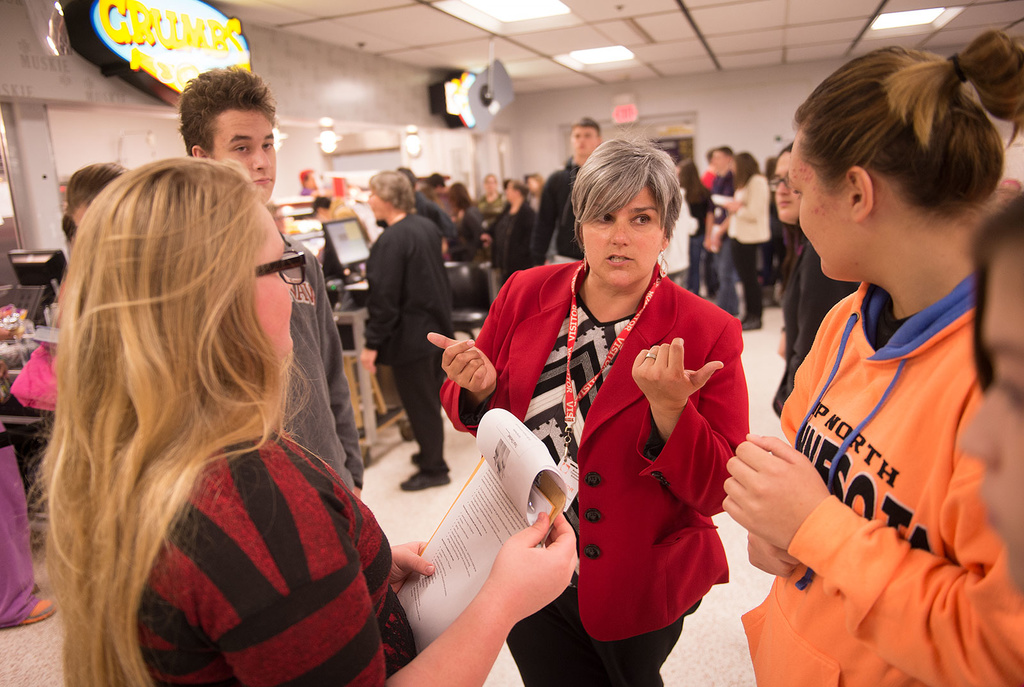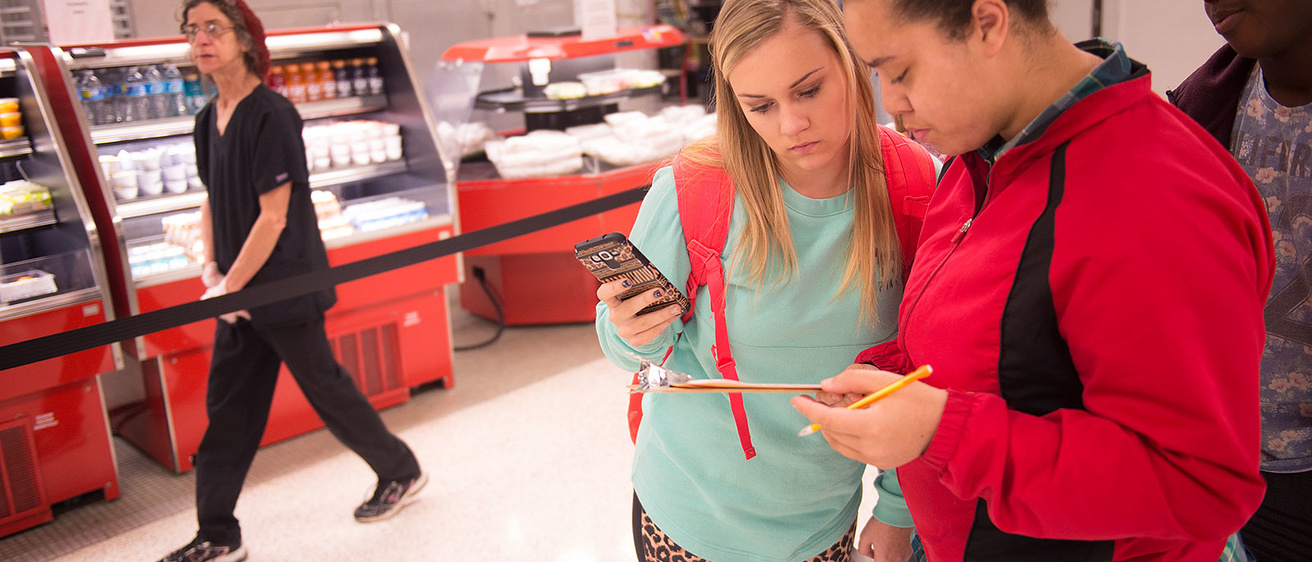How do you decide what to eat?
Is it the way the food is displayed? A creative meal description? The first thing you see when your stomach is growling?
When it comes to school lunch, it can be all three and more. And a new partnership among the University of Iowa Public Policy Center, the College of Public Health, the Iowa Department of Education, and five high schools across the state aims to make healthy choices easier by empowering students to assess and change their lunchroom.
The Smarter Lunchrooms Movement applies simple and low cost changes to lunchrooms based on principles developed by the Cornell Center for Behavioral Economics in Child Nutrition Programs (BEN). The concept behind the BEN Center’s work is that simple environmental changes—like displaying whole fruit, making the entree with the greatest nutrition density most prominent in line, or giving vegetables creative names—have the power to “nudge” students to subconsciously make healthier eating choices while also improving school meal participation and decreasing waste.
Natoshia Askelson, assistant professor at the College of Public Health and project lead, says the partnership aims to take the BEN Center’s research-based ideas—which have been used in schools across the country since the center’s launch in 2010—one step further by putting students and nutrition supervisors in charge.
“The Smarter Lunchroom Movement has been done in bigger, urban schools before, but it hasn’t been done in rural states like Iowa," says Askelson, who holds an appointment at the UI Public Policy Center. "The impact shouldn’t be different, but we believe the process should be different, which is why we’re bringing the students and food-service directors in from the start.”

After meeting with each partner school individually to supply teachers, food-service directors, and students with background information on behavioral economics last fall, Askelson and her research assistants prompted students, staff, and food-nutrition supervisors to complete a lunchroom self-assessment.
The partnership includes five Iowa high schools:
• Harlan Community High School
• Highland High School
• Lisbon Community School
• Muscatine High School
• Sumner-Fredericksburg High School
At Muscatine High School, 10th-grade students broke up into groups to tour their lunchroom. Weaving through crowds of their peers with clipboards and camera phones, they answered questions about how well their cafeteria focused on fruit, promoted vegetables and salads, and displayed healthy dairy items like white milk. The students were asked to photograph what they observed and share their findings with Askelson’s team.
As part of the self-assessment, schools were asked to complete a scorecard based on the BEN Center’s principles to define their lunchroom strengths, areas for improvement, and possible intervention strategies. Now, they’re negotiating with their food-service directors to see which of their suggestions are feasible and helping implement changes in their cafeteria.
So far, food-service directors say the project has been a great opportunity for self-reflection.
“I think it’s great to get the kids involved because they go through the lunch line every day, and even though they see the food, they don’t really see the way it’s displayed because it becomes so routine to them,” says Alisha Eggers, food and nutrition supervisor for Muscatine Community Schools. “We like to be critiqued so we can make improvements, and an exercise like this might prompt students to look at things differently in grocery stores or other parts of the day when they interact with food.”
Ultimately, Askelson says her team will evaluate the impact of the exercise by measuring sales, participation, and production data before and after changes are made. They also plan to conduct pre and post interviews to get a sense of how the project worked, in order to improve implementation if it is later rolled out on a larger scale.
“The end goal is that we have healthy kids who aren’t starving and have good, nutritious meals that are available to them,” Askelson says. “We want kids to walk into a lunchroom where the healthy choice is the fun and easy choice, not the choice they have to think about.”
Participating high schools implemented changes to their lunchrooms eight weeks ago and are now preparing to evaluate those changes. Then, Askelson and her team will visit the schools to help students and staff complete a second self-assessment to document progress.
The research team is also planning to work directly with food-service specialists at each school to examine how those who serve students their food might have a role to play in encouraging healthy eating and expanding upon improvements.
Askelson’s research assistants on this project include soon-to-be College of Public Health doctoral student Patrick Brady, undergraduate research assistant Samantha Budzyn, and social work doctoral student Cris Meier.
